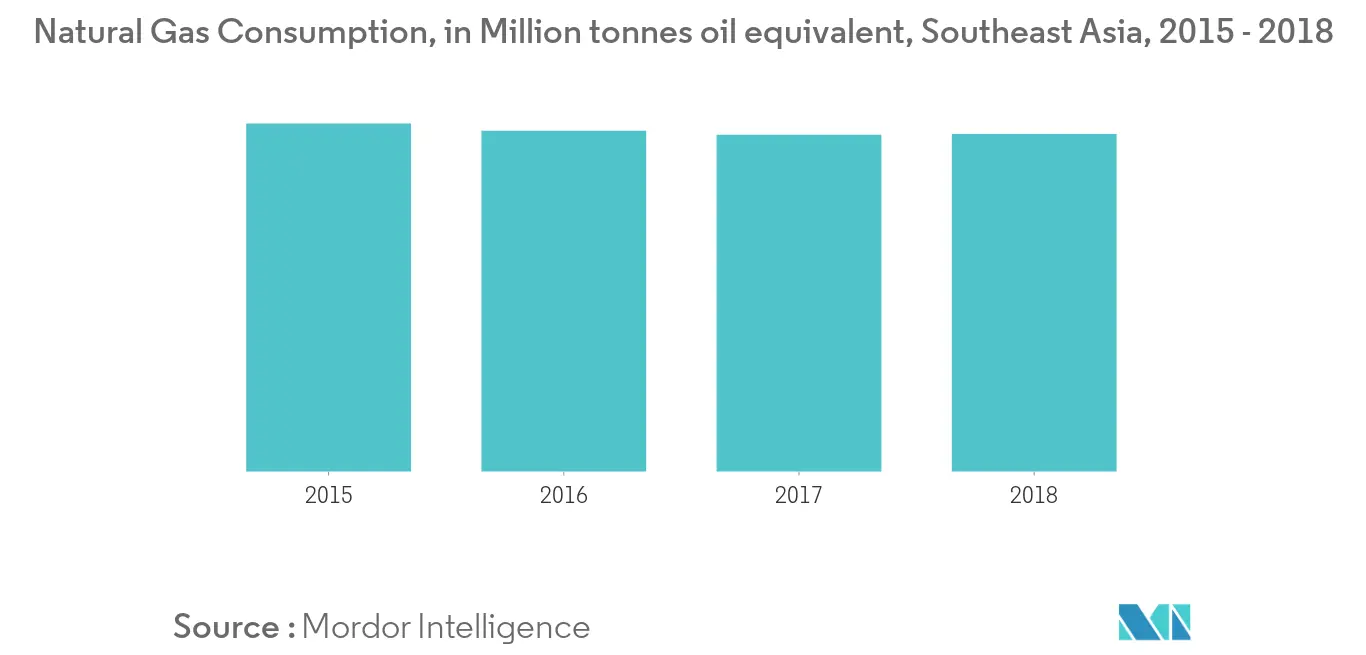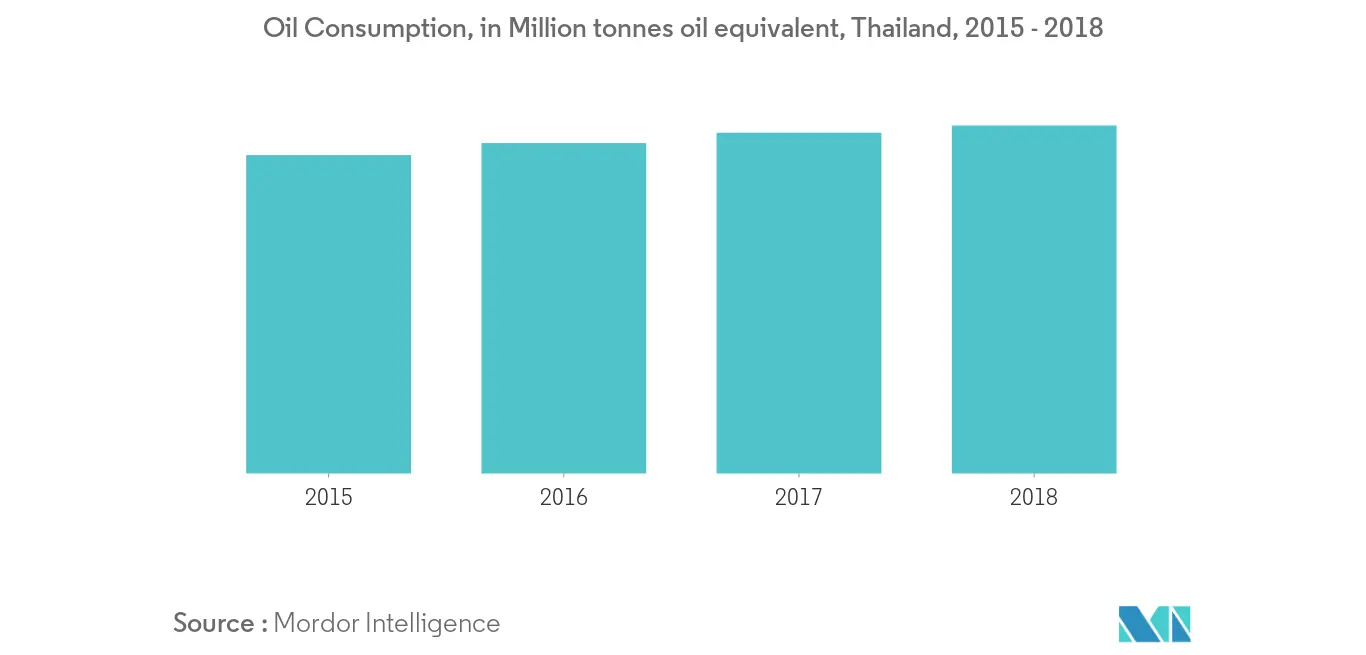Market Trends of Southeast Asia Oil and Gas Midstream Industry
This section covers the major market trends shaping the Southeast Asia Oil & Gas Midstream Market according to our research experts:
Transportation Capacity to Witness Growth
- In 2019, the major countries in the region have moderately developed oil and gas pipeline networks in their nations with Indonesia having one of the largest pipeline networks among the countries in Southeast Asia. The pipeline infrastructure is expected to increase, in the region, in the forecast period
- PetroVietnam Gas has awarded TechnipFMC an EPC contract for the Nam Con Son 2 Phase 2 pipeline through the Nam Con Son and Cuu Long basins offshore southern Vietnam, in 2019.
- Singapore is set to shift toward LNG to meet the bulk of its natural gas demand in the forecast period as piped natural gas supply contracts are discontinued, and LNG import capacity is expected to be expanded, with a new floating regasification plant being planned in the forecast period.
- Consumption of natural gas increased in the region, by 0.15%, to 134.3 mtoe, in 2018, from 134.1 million tons of oil equivalent (mtoe), in 2017 . While gas production decreased has increased in the region, approximately, to 192.4 mtoe, in 2018 from 194.6 mtoe, in 2017. Increase in natural gas consumption positively affect the growth in the sector.
- Hence, pipeline capacity, in Southeast Asia, is expected to increase slightly in the forecast period due to an increase in consumption of oil and investment into the storage infrastructure.

Thailand to Witness Significant Growth
- Thailand is the second-largest consumer and the third-largest producer of oil in Southeast Asia. It consumed 1.478 million barrels per day, in 2018, mainly in transport and non-energy use. Thailand has ample oil storage capacity. The total storage capacity in the country is expected to be approximately 10.2 million kiloliters.
- In 2019, Thailand's national oil and gas firm PTT Plc plans to develop a gas pipeline in the Northeast, expecting to add capacity to the group's existing gas pipeline. The pipeline extension aims to improve infrastructure to help Thailand become a hub for liquefied natural gas (LNG) in Southeast Asia.
- Consumption of oil increased in the country, by 2.2% from 65.8 million tons of oil equivalent (mtoe), in 2018 to 64.4 mtoe, in 2017. The increase in consumption is expected to boost the growth in the oil and gas midstream sector in the country and the region.
- Thailand oil and gas midstream industry is expected to grow slightly in the forecast period due to an increase in the consumption of oil and an increase in investment in the sector.

